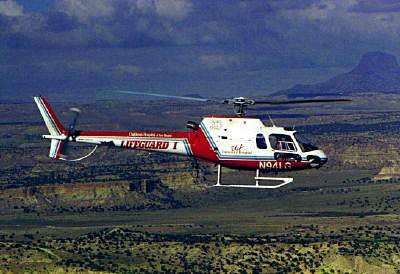Wed, Dec 09, 2020
AD 2020-24-07 Retains The Requirements Of AD 2018-26-02 And Adds Calendar Time Compliance Times
The FAA is superseding Airworthiness Directive (AD) 2018-26-02 for Airbus Helicopters (previously Eurocopter France) Model AS350B3, EC130B4, and EC130T2 helicopters. AD 2018-26-02 required inspecting the pilot's and co-pilot's throttle twist for proper operation.

This new AD retains the requirements of AD 2018-26-02 and adds calendar time compliance times for the required actions. This AD was prompted by a public comment that prompted additional review. The actions of this AD are intended to address an unsafe condition on these products. This AD is effective January 12, 2021.
Supplementary Information: The FAA issued a notice of proposed rulemaking (NPRM) to amend 14 CFR part 39 to remove AD 2018-26-02, Amendment 39-19532 (83 FR 66093, December 26, 2018) (AD 2018-26-02), and add a new AD. AD 2018-26-02 applied to Airbus Helicopters Model AS350B3 and EC130B4 helicopters with an ARRIEL 2B1 engine with the two-channel Full Authority Digital Engine Control (FADEC) and with new twist grip modification (MOD) 073254 (for Model AS350B3 helicopters) or MOD 073773 (for Model EC130B4 helicopters) installed, and Model AS350B3 and EC130T2 helicopters with an ARRIEL 2D engine installed. The NPRM published in the Federal Register on June 11, 2020 (85 FR 35604). The NPRM proposed to retain the inspection requirements of AD 2018-26-02 and include inspecting the wiring, performing an insulation test, inspecting the pilot and copilot throttle twist grip controls, and testing the pilot and copilot throttle twist grip controls for proper functioning. The NPRM also proposed to include calendar
compliance times for the repetitive inspections at intervals depending on operating conditions.
AD 2018-26-02 was prompted by EASA AD No. 2017-0059, dated April 6, 2017, issued by EASA, which is the Technical Agent for the Member States of the European Union. EASA advised that the switches in the engine “IDLE” or “FLIGHT” control system could be affected by the corrosive effects of a salt-laden atmosphere, which could lead to engine power loss. EASA advised that this condition, if not detected and corrected, could, in case of failure of the other switch, prevent the pilot from switching from “IDLE” to “FLIGHT” mode during training of autorotation landing, making aborting the autorotation impossible, resulting in unintended touchdown.
More News
Aero Linx: International Federation of Airworthiness (IFA) We aim to be the most internationally respected independent authority on the subject of Airworthiness. IFA uniquely combi>[...]
Ultrahigh Frequency (UHF) The frequency band between 300 and 3,000 MHz. The bank of radio frequencies used for military air/ground voice communications. In some instances this may >[...]
A Few Questions AND Answers To Help You Get MORE Out of ANN! 1) I forgot my password. How do I find it? 1) Easy... click here and give us your e-mail address--we'll send it to you >[...]
From 2019 (YouTube Edition): Learning To Paint Without Getting Any On Your Hands PPG's Aerospace Coatings Academy is a tool designed to teach everything one needs to know about all>[...]
Also: Sustainable Aircraft Test Put Aside, More Falcon 9 Ops, Wyoming ANG Rescue, Oreo Cookie Into Orbit Joby Aviation has reason to celebrate, recently completing its first full t>[...]
 ANN's Daily Aero-Linx (05.06.25)
ANN's Daily Aero-Linx (05.06.25) ANN's Daily Aero-Term (05.06.25): Ultrahigh Frequency (UHF)
ANN's Daily Aero-Term (05.06.25): Ultrahigh Frequency (UHF) ANN FAQ: Q&A 101
ANN FAQ: Q&A 101 Classic Aero-TV: Virtual Reality Painting--PPG Leverages Technology for Training
Classic Aero-TV: Virtual Reality Painting--PPG Leverages Technology for Training Airborne 05.02.25: Joby Crewed Milestone, Diamond Club, Canadian Pilot Insurance
Airborne 05.02.25: Joby Crewed Milestone, Diamond Club, Canadian Pilot Insurance



